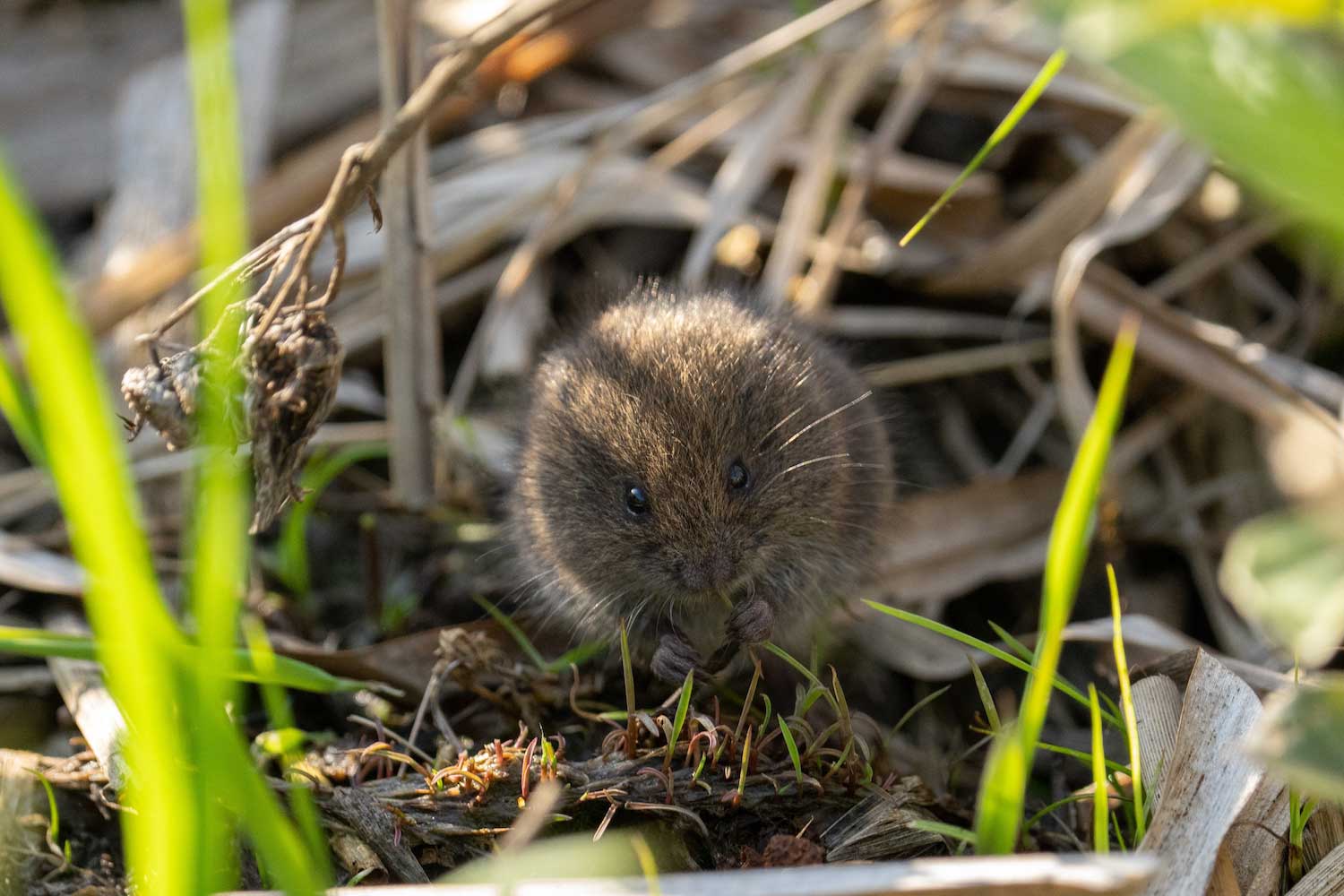Five fast facts about little-known voles

If you think about the animals that live just below our feet, what comes to mind? Probably ants and other insect species. At the other end of the size scale, you might think of badgers, which are known for their excellent digging skills. Moles might come to mind too, and maybe with them voles.
Three species of voles inhabit Illinois: meadow voles, prairie voles and woodland voles, and all three are common in northern Illinois, according to Wildlife Illinois. Meadow voles and prairie voles both inhabit grassland areas, while woodland voles live in forested areas.
Like moles, voles are rodents. And also like moles, voles dig underground tunnels and burrows. But unlike moles, which are rarely seen aboveground, some voles spend quite a bit of time aboveground. Meadow voles will even nest aboveground, Wildlife Illinois reports.
Read on to learn more about voles.
They aren't mice, or moles
Voles are often mistaken for mice. They are even sometimes referred to as meadow mice, but voles and mice are not one and the same. Both are rodents, and both are similar in size and appearance, giving rise to the confusion between the species. The key identification feature between voles and mice is their tails. Voles have short tails, while mice tails are about half the length of their bodies, according to the Penn State Extension.
Another animal voles are often confused for is moles. This, too, is understandable, because moles and voles are both primarily subterranean creatures, plus their names are almost identical. The easiest way to tell a mole from a vole is to look at its claws or its snout. Moles have large front feet with large claws that they use for digging. Voles, on the other hand, have small front feet. And whereas a vole has a short, blunt snout, moles have long pointy snouts. Voles also have visible ears, while moles do not.
They have a lot of babies
Rabbits have a reputation for being prolific breeders, but voles can certainly give them a run for their money. Voles can have as many as five litters of offspring a year, and they can breed in any season, although litters are most common in the spring and summer, the Penn State Extension reports.
Each litter can have as many as 11 babies, although the average litter size is usually between three and six. Litter size varies slightly among different vole species. Meadow voles and prairie voles typically have three to five babies per litter, while woodland voles usually only have two or three, Wildlife Illinois reports.
Another reason voles are such prolific breeders is because they can begin reproducing at such a young age. Baby voles are weaned at about 3 weeks old, the Extension reports. Females can begin reproducing when they are between 35 and 40 days old.
They are big plant eaters
Some underground dwellers feast on insects and other invertebrates they find while tunneling through the soil, but voles are plant eaters and often eat while aboveground. Their primary food source is grass, clover, plantain, alfalfa and goldenrod, but they will also eat seeds, grains and berries, according to Wildlife Illinois. On occasion, they may eat snails or insects.
In the winter, when their preferred grasses and vegetation are not readily available, they will gnaw at bark at the base of tree trunks for food. To prepare for winter and its dearth of readily available food, they will begin to store seeds, bulbs, tubers and rhizomes in late summer and fall.
They are an important link in the food chain
Like mice and many other small mammals, voles play an important role in the ecosystem because they are preyed upon by many other animals higher up the food chain. Carnivores such as badgers, coyotes, foxes and weasels will all hunt voles, according to the University of California. Raptors like hawks and owls also prey on voles and many other small rodents. Even our pet cats kill voles.
Because voles tunnel and burrow in the soil, they also improve soil health in areas where they are active, Treehugger reports. As they dig, they aerate the soil, which improves soil quality. The digging activity also allows organic matter to become better mixed into the soil.
They can be a nuisance
Most people don't know much about voles, and those who do usually do because they have caused problems around their homes or on their property. Because they build burrows and tunnels just below ground, they often leave signs of their activity aboveground in the form of runways or trails in the grass. However, voles are also often blamed for damage caused by other animals, including moles and rabbits.
While meadow voles and prairie voles are common in open, grassy areas, voles most commonly become a nuisance in agricultural areas, according to Wildlife Illinois. Around homes, voles sometimes eat bulbs and tubers, particularly in winter when food is more scarce. Signs that voles are digging around your home include 1-inch to 2-inch wide trails and runways through grassy areas. The areas surrounding these trails will often have grasses and other vegetation cut to the ground. Vole runways are often most apparent in winter when there is no snow covering the ground. Once the growing season begins, grass and other vegetation often hides the signs of their presence.
